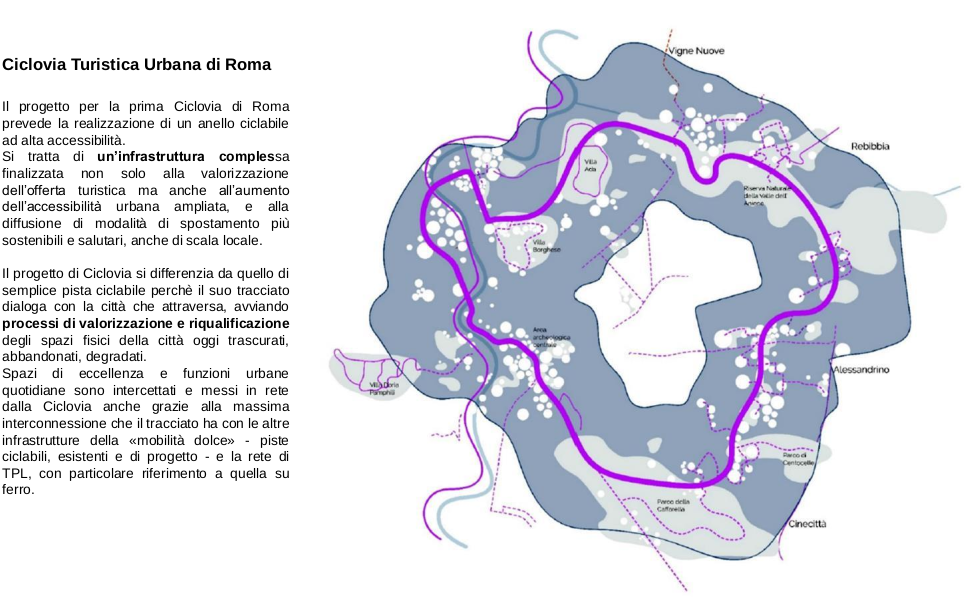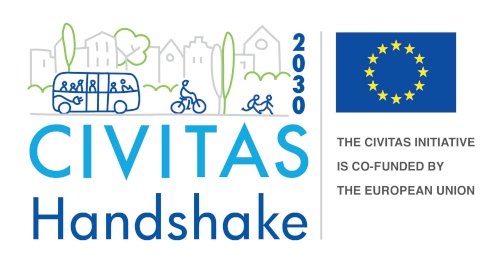The last year has been an exciting one for cycling in the Eternal City. COVID-19 inspired the creation our transitory cycle routes plan, and recently the 20km mark was passed for the construction of routes set out in this. Those now seeing the light of day are on main streets and along other key routes.
The plan is laying the foundations for the Italian capital’s long-awaited cycling network, whose creation is making Rome one of Handshake’s 10 “Future Cycling Capitals”. The plan is only part of Rome’s cycling infrastructure strategy, however. Through its public transport operator Roma Servizi per la Mobilità, the city is also working on the GRAB (Grande Raccordo Anulare delle Bici) project.
This 45-km long, easily accessible cycling and pedestrian ring will extend throughout the city. In doing so, it will improve connectivity between neighbourhoods and provide a dedicated and safe space for active travel for everyone. Being “light” infrastructure, its construction will also have a small environmental impact.
Starting at the birthplace of Romulus and Remus, it will pass by the contemporary architecture of Zaha Hadid and Renzo Piano and the landmarks of the Colosseum, St Peter, Trastevere, and the historic centre. Its route will also take in parks and other areas of nature.
Thanks to Handshake’s mentoring programme, the City of Amsterdam has provided Rome with knowledge and good practices for the GRAB’s development. The project has also benefitted from Dutch courage from another, perhaps more unexpected, source.
Over the last few years, the Netherlands embassy in Italy has supported Rome’s cycling work. The initial interest shown by Joost Flamand and Dewi van de Weerd, respectively (former) Dutch Ambassador and (current) Deputy Dutch Ambassador to Italy, eventually led to more robust collaboration.
To boost cycling’s profile in Rome, the embassy endorsed and helped develop communication materials for the Six Nations 2020 and contributed to workshops on the transitory cycle plan and more, among other activities. In the future, it will advise on promoting the GRAB to citizens.
To get an idea of the GRAB, Desiree Bonis, the new Dutch Ambassador to Italy, and Deputy Ambassador van de Weerd were taken on a cycling tour of its first section earlier this month. They were joined by Enrico Stefano, Rome’s Commissioner for Mobility, as well as Fabrizio Benvenuti and myself from Roma Mobilita.
Running from the Arch of Constantine behind the Colosseum to the ancient roads of Appia Antica, this unique path will represent a milestone on the city’s journey towards a cycling revolution –thanks in part to a touch of Dutch.
The GRAB project and the Handshake experience will be presented at the Velo City 2021 in Lisbon in the High-Impact Cycling Strategies session.
Read more on Rome’s work in Handshake here.
Image credits: Roma Servizi per la Mobilità


